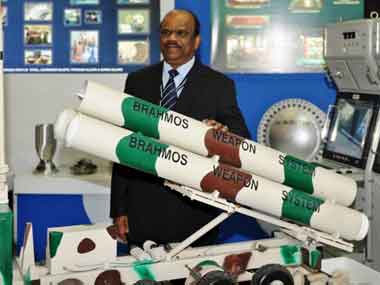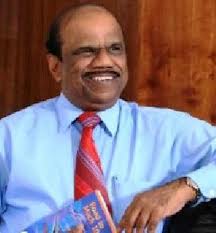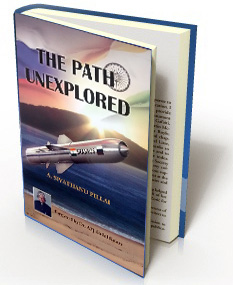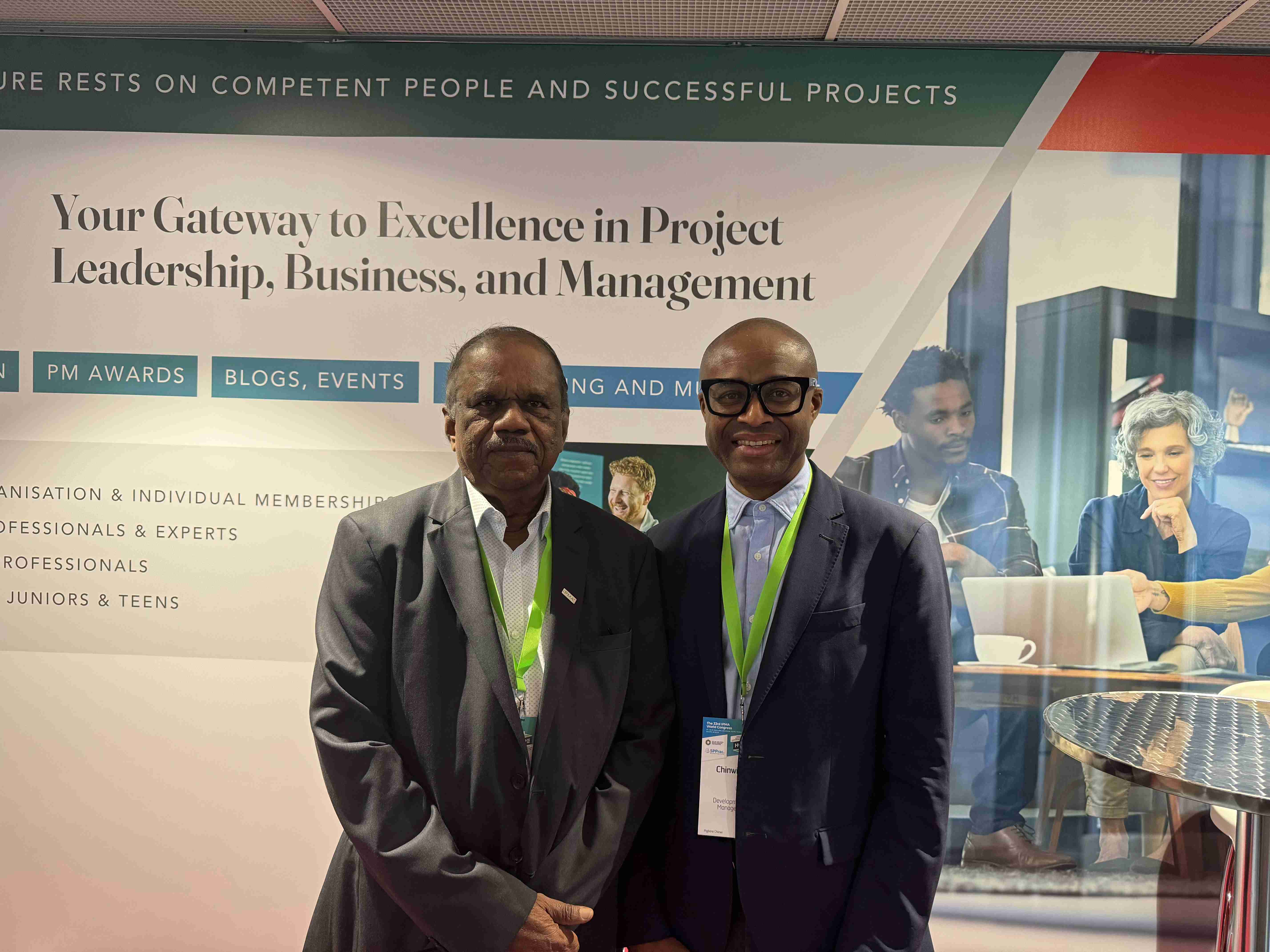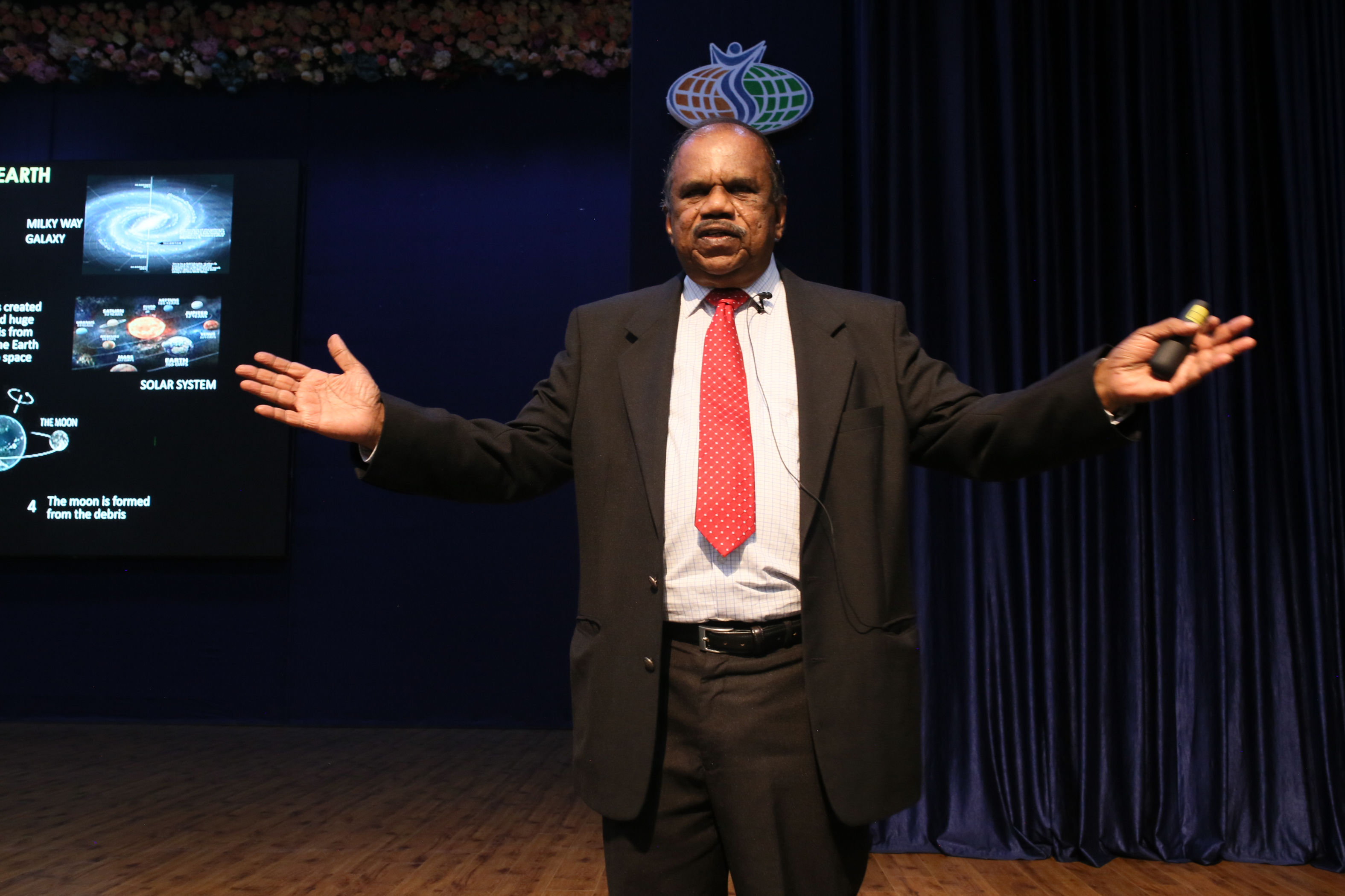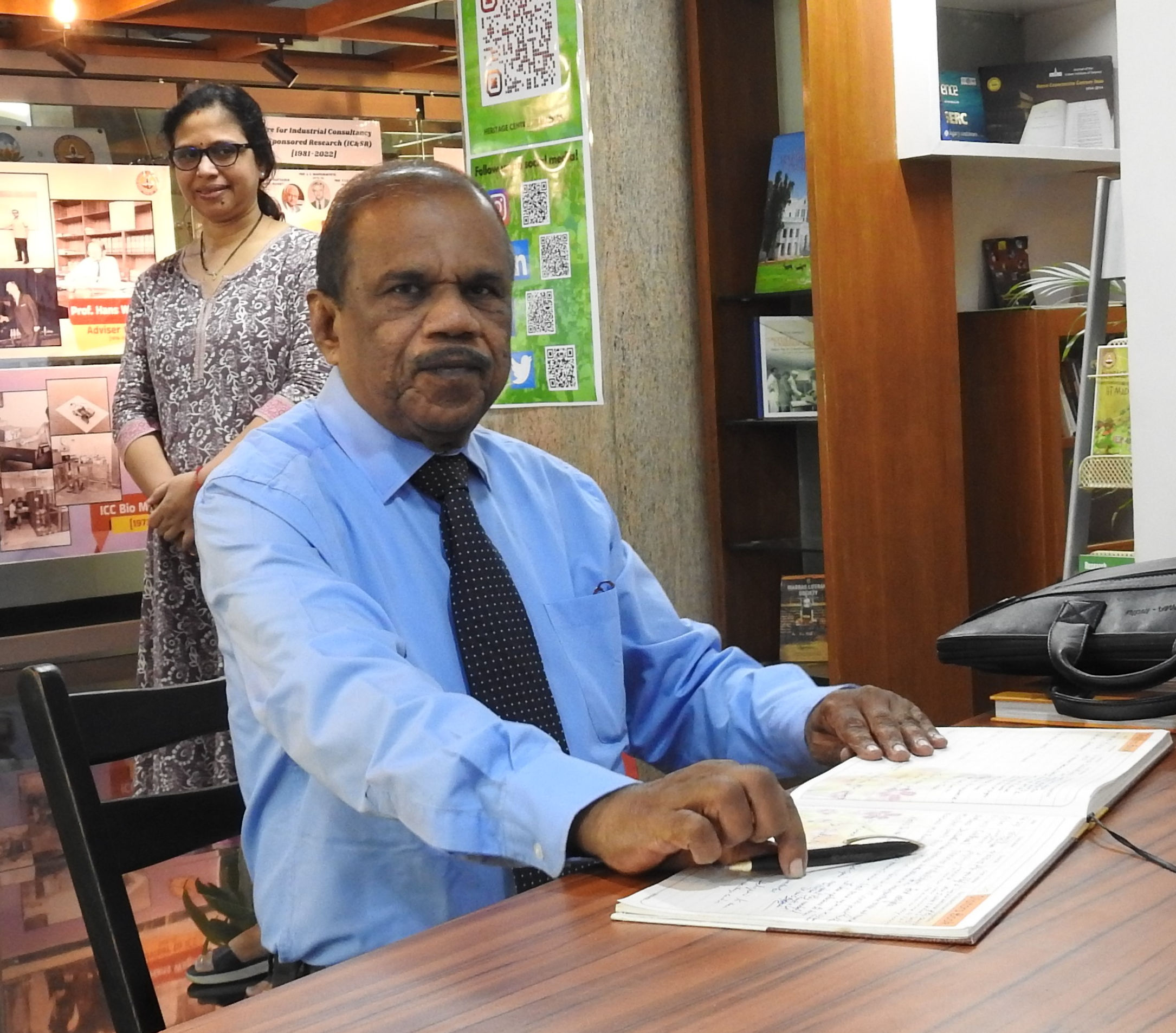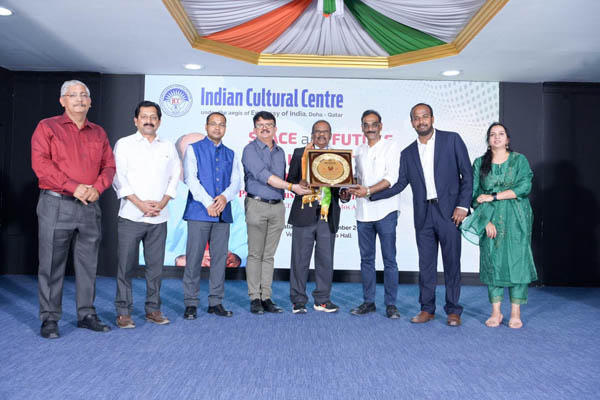8th ANNUAL CONVOCATION ADDRESS
NATIONAL INSTITUTE OF TECHNOLOGY, CALICUT
17 October 2012
By
Dr. A Sivathanu Pillai
Distinguished Scientist & Chief Controller (R&D), DRDO
and
CEO & MD, BrahMos Aerospace
“Indomitable Spirit - Making Impossible to Possible”
__________________________________
Dr. CG Krishnadas Nair, Chairman NIT Council, Dr. Bandyopadhyay, Director, National Institute of Technology, Calicut, Deans, Head of Departments, Distinguished Guests, faculty members, Graduates who are receiving certificates and their proud parents, Ladies and Gentlemen, My warm greetings to all of you.
I am indeed honoured to participate and to deliver the convocation address in the 8th Annual Convocation of the National Institute of Technology, Calicut. The state is blessed with natural resources and great people in various fields like science, administration / diplomacy, philosophy etc. Adi Shankara – the great philosopher who consolidated and spread the doctrine of Advaita Vedanta, Dr. Varghese Kurien, the Milkman of India and the Father of White Revolution who made India self-sufficient in milk, Shri TN Seshan who had brought revolution through electoral reforms, Shri KR Narayanan, Former President of India, Shri Sreedharan – a leader with passion and famous for Konkan Railway and Delhi Metro, Space scientists Dr. Kasturi Rangan and Dr. Madhavan Nair, former Chiefs of ISRO who took the organisation to greater heights. The land has got importance due to the space activities that transformed India through applications in communication and remote sensing to the doorsteps of common man and has got the defence research laboratory NPOL which has developed world class underwater sensors called sonars and communications. BrahMos Aerospace Thiruvananthapuram Ltd (BATL) was the pioneer Defence industry in Kerala producing components for aerospace and defence need sparticularly for BrahMos Supersonic cruise missile. Following BATL, the HAL, Bharat Electronics, BEML, Naval Academy in Ezhimala, all from defence ministry have also been established.
Dear graduates, this is a great day in your life, and take-off point for a bright future. You have chosen the important profession of engineering which can help building a great India, we are all dreaming for. The environment that persists makes you to enrich your brain power. With the acquisition of knowledge and utilization of knowledge for the benefit of the country will definitely make NIT Calicut proud to be one of the few top institutions in the country in producing such a quality technical manpower.
Brain Power of Indians & the standard of Indian Institutions
As we have seen from the above example, the brain power of India is enormous and there is no equivalent force to it in the rest of the world. Talents of the students who pass out from Indian technical institutions are well recognised in the Western world. Whereas, these “Institutes of Excellence” of India i.e. IITs are ranking at 200 plus spots. According to the QS University World Ranking, IIT Delhi and IIT Kanpur have attained a position of 212 and 278 respectively in the world ranking chart. IITs get funding to the tune of Rs.900-1300 crores each for the education of its students. Near about Rs.1.7 crore being spent on every student and almost all migrate to the developed countries. Which means the knowledge gained by them is being used for the development of the countries other than India at our cost.
Comprising thirty autonomous institutes located in one each major state/ territory of India, NITs are the main resource of technical manpower of India fulfilling the need for quality manpower in the field of engineering and technology. All NITs have shown continuous improvements in fine-tuning competitiveness of student, administration structure, academic research and student placements. Students who are passing out of NITs have become the major brain resource for the nation’s important mission mode programmes. We thank you for contributing for the country’s missions.
Our spiritual wisdom and civilization have been our strength. The brain power of our people is better than that of any other country and we are in demand elsewhere. The onslaughts of invaders for more than 1000 years and the numbing effects of colonisation did not deter us. We have learnt to adjust rifts and divisions in our own society. But in the process of all adjustments, we also lowered our aims and expectations and settled down to a lower mindset. From the great knowledge givers to the world and richness, we came down to the lowest strata of prosperity, when we got the freedom. It is time to regain our heritage and wisdom to enrich our lives. We need to home-grow our own model of development, based on our inherent strengths to tell the world that Indians are great people.
We need to set our targets very high and work hard to achieve that high aim. Problems may come on the way but we have to defeat them so that problems do not absorb us. Nothing is impossible to achieve, if our aims are high and purposeful and we are determined to achieve them.
Mahatma Gandhi once told,
“Men often become what they believe themselves to be. If I believe I cannot do something, it makes me incapable of doing it. But when I believe I can, then I acquire the ability to do it, even I did not have it in the beginning.”
So friends, everything is in your hand. You must make yourself ready to do a remarkable work, which will find a place for you in the history of the world. You know that history is not written for cowards and one who thinks small. If you think big, if you have a vision, and if you help others, if you do a great task or invention, or a great project, you will find a page written in the history of the world. I wish the names of those who studied at NIT, Calicut are imprinted in that book.
Dear graduates, I would like to share my personal experience with you. After my graduation in engineering in 1969, I was fortunate to work with three great technology leaders; Dr. Vikram Sarabhai – a great visionary & the father of space research in India, Prof. Satish Dhawan – an institution builder and a great Technologist who nurtured the space programme with visible targets, and Dr. APJ Abdul Kalam – the father of India’s missile programme, Motivator of youth and people’s president. I am telling this because what we learn through others’ wisdom and experiences, we can shape our career path in a leap-frog trajectory in life. You will come across several experienced leaders in your career path. Learn the best out of them and add as inputs to your knowledge, experienced and virtues to grow further. The power of mind is enormous and there is no word in your dictionary as “Impossible”. What you aim for, you will achieve, if you are determined. You need to build courage and face problems in life.
I would like to share with you some of my thoughts experiences in conquering the technological challenges that will emphasize on Making Impossible things Possible through Indomitable Spirit.
There are three things to succeed in the mission of life. They are: (1) Aim high; (2) Acquire knowledge and work hard and (3) Perseverance to overcome problems. Let me narrate the experiences in the succeeding paragraphs.
Case Study 1: Indomitable Spirit – SLV Experience:
 Dr. Vikram Sarabhai, a great visionary of our time envisioned Space Research in India and gave a profile. Development of satellite launch vehicles was one
of his focussed areas. Prof. Satish Dhawan nurtured those aim and gave full support for Dr. Abdul Kalam in the development of SLV-3. It was 10th
August 1979. The countdown for India’s first experimental launch of SLV-3 (SLV-E01) was progressing at SHAR Centre of ISRO for the last 36 hours and we
were at T-1 hour for the launch. Every subsystem gave green signal in the checkout consoles, indicating its perfect health. Everyone present was thrilled
to see the countdown and with great anticipation awaiting the result for their 7 year effort of putting together the technologies, skills and products to
inject the Rohini Satellite into the near earth orbit.
Dr. Vikram Sarabhai, a great visionary of our time envisioned Space Research in India and gave a profile. Development of satellite launch vehicles was one
of his focussed areas. Prof. Satish Dhawan nurtured those aim and gave full support for Dr. Abdul Kalam in the development of SLV-3. It was 10th
August 1979. The countdown for India’s first experimental launch of SLV-3 (SLV-E01) was progressing at SHAR Centre of ISRO for the last 36 hours and we
were at T-1 hour for the launch. Every subsystem gave green signal in the checkout consoles, indicating its perfect health. Everyone present was thrilled
to see the countdown and with great anticipation awaiting the result for their 7 year effort of putting together the technologies, skills and products to
inject the Rohini Satellite into the near earth orbit.
At that time of important phase of final checks at T-8 minutes, the reaction control thrusters which were housed in between the first and second stages gave warm up pulse, by mixing the Hydrozene propellant and the Red Fumic Nitric Acid (RFNA). The warm up was necessary for the thrusters to be ready for the final operation of the control system. Inside pressure of the oxidizer tank gave a drop, indicating something wrong. During automatic checkout from T-6 minutes, checkout computer put a “hold” on to the mission. The experts met at the block house and the vehicle director opined that the pressure of the tank, though was low, was sufficient for the control system performance and advised to progress the launch faster. The Mission Director gave an overriding command to go ahead for the launch. At T-0, the SLV-E01 took off perfectly and the first stage performance was as predicted, and SLV-3 was on its course. After separation of the first stage, the second stage motor ignited, but could not go as per the trajectory and the whole system tumbled due to loss of control and fell into the Bay of Bengal. Thus, in one stroke, the 7 years of hard efforts of more than 400 scientists, engineers and technicians came to naught.
Dr. APJ Abdul Kalam, Mission Director wanted to know why this had happened. Everyone waited for the telemetry results to come. Mission Director too k charge and got the detailed analysis made throughout that whole night and found the reason for the failure. The reason was identified and solenoid valve which opened to give the warm-up pulse for the reaction control system remained open and all the RFNA stored in the 2nd stage control system leaked before the launch. Mission Director took the responsibility on his shoulders and the SLV-3 team worked hard and the next launch SLV E-02 on 18th July 1980 was a total success, orbiting the Rohini satellite in near earth orbit. Jubilant everywhere. Dr. APJ Abdul Kalam, the leader having such will power to come out of the problem and succeeded in the mission.
Failures in life should not de-motivate you. We should consider the failures as the stepping stone for success, with indomitable spirit.
“We need an indomitable spirit and courage to face and learn from failures to succeed in any mission”
Case Study 2: Agni Re-entry Structure
 India’s long range guided missile is Agni, the Intermediate Range Ballistic Missile. In its trajectory, it flies to an altitude of 600 kms and flies back
to the target point, re-entering the earth’s atmosphere. Re-entry is a very important technology, as the re-entry module has to withstand 3000°C at the
point of crossing the atmosphere. It is very important the re-entry module must protect its shape and structural integrity even at this condition for the
mission to be accomplished to deliver the payload at the right destination. This needs a very exotic material called Carbon-Carbon. Only two countries knew
this technology when we started development of Agni. It was a very challenging task because with almost no basic information and technology we have to
develop this re-entry module. Mrs. Rohini Devi – a Scientist and Chemical Engineer by Profession at Defence Research Development Laboratory, Hyderabad
(DRDL), developed this re-entry technology within a short span of four years leading a team of young dedicated scientists. This shows empowering the
scientists and giving a challenge to them will result in a magnificent technology. Such challenges and opportunities with empowerment can definitely bring
extraordinary results from our youth - both boys and girls. Today, India possesses the vital “Re-Entry Technology” which is essential for manned space
missions. The technology has given heart valve due to its bio-compatibility of carbon-carbon.
India’s long range guided missile is Agni, the Intermediate Range Ballistic Missile. In its trajectory, it flies to an altitude of 600 kms and flies back
to the target point, re-entering the earth’s atmosphere. Re-entry is a very important technology, as the re-entry module has to withstand 3000°C at the
point of crossing the atmosphere. It is very important the re-entry module must protect its shape and structural integrity even at this condition for the
mission to be accomplished to deliver the payload at the right destination. This needs a very exotic material called Carbon-Carbon. Only two countries knew
this technology when we started development of Agni. It was a very challenging task because with almost no basic information and technology we have to
develop this re-entry module. Mrs. Rohini Devi – a Scientist and Chemical Engineer by Profession at Defence Research Development Laboratory, Hyderabad
(DRDL), developed this re-entry technology within a short span of four years leading a team of young dedicated scientists. This shows empowering the
scientists and giving a challenge to them will result in a magnificent technology. Such challenges and opportunities with empowerment can definitely bring
extraordinary results from our youth - both boys and girls. Today, India possesses the vital “Re-Entry Technology” which is essential for manned space
missions. The technology has given heart valve due to its bio-compatibility of carbon-carbon.
Floor Reaction Orthosis
The Indian defence programmes have given important spin off technologies. Floor Reaction Orthosis (FRO) is one of the spin-off technologies resulted out of re-entry technology with light weight and more strength. FRO is the modern remedy for the polio patients whose quadriceps muscles are paralyzed. Compared to conventional 3 kg caliper, DRDO’s FRO weighs only 300 gm and costs one fifth. There was a necessity for standardization, process upgradation and productionisation of FRO with due clinical validation in order to cater the pressing need of the large number of children affected by polio. We have arranged several camps to distribute the caliper to the needy children from different states. In Kerala, we have organized camps in Calicut, Kochi and Thiruvananthapuram. Today, our team could lead to 40000 children to have the light weight calipers with the participation of many NGOs and voluntary organisations. We are extending our help to some of the Asian countries.
Case Study 3: Supercomputer
Re-entry being the most critical aspect of such class of missiles, we had to configure the optimal design of the re-entry nose cone of the Agni. This required a hypersonic test facility for evaluating hundreds of configurations which did not exist in India at that time. So, there was a requirement of mathematical solution to the problem.
The technique used for designing the shape of the module was Computational Fluid Dynamics with elaborate software codes to analyze more than 100,000 grid points in the structure. Supercomputer can do the iteration using a fast algorithm, without which, it will take considerable time for the analysis. A two pronged approach was initiated with a group of young scientists to evolve new CFD codes and another group of young scientists to develop a supercomputer under the leadership of Dr. G Venkataraman. Within 24 months the team came out with a solution to reduce each iteration time from 9 days to 5 minutes, using the fastest Supercomputer PACE++ parallel processor, which was 20 times faster than the Cray XMP Computer, refused to India. The CFD effort resulted a top class CFD centre in the campus of Indian Institute of Science. Networking of Academy and R&D Labs and using fresh young minds from the Universities have tremendously helped to overcome the Technology denial regime instituted by few developed Nations. You can see the “Indomitable Spirit” of young scientists behind the development of supercomputer for Agni project.
Case 4: BrahMos Supersonic Cruise Missile – The Brahmastra
 The Gulf Wars from 1991 gave us the message that cruise missiles are very important to destroy the enemies’ assets on the first day, without even the enemy
knowing. Cruise missiles are stealthy, fly at very low altitude and very precise to hit the target. American Tomahawk missiles were dominant during the
Gulf Wars, but it has a subsonic speed. India decided to go for cruise missile development, with a difference. When the whole world was using subsonic
(i.e. speed less than that of sound) cruise missiles, India decided to go for supersonic cruise missile, 3 times faster than the sound. To cut short the
time of development and inherit very high level of technology, India joined hands with Russia making the BrahMos joint venture. BrahMos is responsible to
design, develop, produce and market a world class cruise missile. A new generation young scientists from the Indian institutions with the help of
experienced Russian specialists, formed a consortium with industries of India and Russia, made it possible to create a wonderful product, i.e. BRAHMOS. It
is a supersonic cruise missile, which can be launched from any platform on land, on sea, underwater and in air with multiple missions against land and sea
targets. The unique nature of BrahMos with its universality made Indian Armed Forces, the first in the world to possess supersonic cruise missiles. Various
versions of BRAHMOS have been developed, produced and inducted in the Indian Armed Forces on ships and on land. In one of the flight trials of land attack
version conducted on 20th Jan 2009, the missile had an excellent flight throughout its flight and only in the final stage it missed the target.
The mission was aborted after the missile went off-target. The bug was identified and software coding was corrected to ensure the hit of the target and
within one and a half month’s time, on 04th March 2009, the system had been successfully flight tested in the presence of Army Personnel.
Another flight trial conducted on 29th March 2009 by the Army Personnel that proved the successive success of the system. The success came from
the leadership through constant support, encouragement and guidance to the entire team. Today, Indian Army is the only Land Force in the world to have a
land attack Supersonic Cruise missile for precision attack. The best students of more than 200 coming from National Institutes are those who have created
history by making this wonderful product, which made India the world leader in the cruise missile family. The developed world got astonished to see the
Indian might through this Brahmastra. We together established that “We can do it”.
The Gulf Wars from 1991 gave us the message that cruise missiles are very important to destroy the enemies’ assets on the first day, without even the enemy
knowing. Cruise missiles are stealthy, fly at very low altitude and very precise to hit the target. American Tomahawk missiles were dominant during the
Gulf Wars, but it has a subsonic speed. India decided to go for cruise missile development, with a difference. When the whole world was using subsonic
(i.e. speed less than that of sound) cruise missiles, India decided to go for supersonic cruise missile, 3 times faster than the sound. To cut short the
time of development and inherit very high level of technology, India joined hands with Russia making the BrahMos joint venture. BrahMos is responsible to
design, develop, produce and market a world class cruise missile. A new generation young scientists from the Indian institutions with the help of
experienced Russian specialists, formed a consortium with industries of India and Russia, made it possible to create a wonderful product, i.e. BRAHMOS. It
is a supersonic cruise missile, which can be launched from any platform on land, on sea, underwater and in air with multiple missions against land and sea
targets. The unique nature of BrahMos with its universality made Indian Armed Forces, the first in the world to possess supersonic cruise missiles. Various
versions of BRAHMOS have been developed, produced and inducted in the Indian Armed Forces on ships and on land. In one of the flight trials of land attack
version conducted on 20th Jan 2009, the missile had an excellent flight throughout its flight and only in the final stage it missed the target.
The mission was aborted after the missile went off-target. The bug was identified and software coding was corrected to ensure the hit of the target and
within one and a half month’s time, on 04th March 2009, the system had been successfully flight tested in the presence of Army Personnel.
Another flight trial conducted on 29th March 2009 by the Army Personnel that proved the successive success of the system. The success came from
the leadership through constant support, encouragement and guidance to the entire team. Today, Indian Army is the only Land Force in the world to have a
land attack Supersonic Cruise missile for precision attack. The best students of more than 200 coming from National Institutes are those who have created
history by making this wonderful product, which made India the world leader in the cruise missile family. The developed world got astonished to see the
Indian might through this Brahmastra. We together established that “We can do it”.
FUTURISTIC TECHNOLOGIES & PRODUCTS
a) Hypersonic Reusable Cruise Missile–The Sudharshan Chakra
Lord Krishna took Viswaroop at Kurukshetra, with his mighty ever-moving Sudharshan Chakra on his right index finger. The importance of Sudharshan Chakra was its ever readiness to destroy the enemy and come back. If this is so, the idea came to us that why not we create a hypersonic cruise missile which destroys the target and flies back to us for re-use. Going at a speed of Mach 7, deliver the warhead, assess the destruction of the target, come back and get ready to go again, i.e. Hypersonic Reusable Cruise Missile, the next version of Sudharshan Chakra. This is the BrahMos-II programme and it has been started with its design and basic technology development. Our dream of achieving this extraordinary project will come true with the help of young engineers like you.
b) Thorium - Energy
India is blessed with the rare, and very important, nuclear fuel of the future – Thorium. More than 30 per cent of the world stock of Thorium is in India. It is time for us to utilise this opportunity to emerge as the energy capital of the world. A lesser-known member among radioactive materials is Thorium. It is the best possible solution in the future - technologically and commercially the best option for energy generation in another two decades. Thorium is far more abundant, about 4 times, than the traditional nuclear fuel, Uranium and occurs in far purer form too. It is believed that the amount of energy in Thorium reserves on earth is more than the combined total energy in left petroleum, coal, other fossil fuels and Uranium, all put together. According to the IAEA Report on Thorium fuels, India has the largest reserves of Thorium in the world, with over 650,000 Tonnes. Comparatively we have barely 1 per cent of the world Uranium deposits which is currently being put to effective use through our opting for closed fuel cycle technology. Thorium has many other advantages. It is estimated that Thorium may be able to generate (through uranium-233 producible from it) 8 times the amount of energy per unit mass compared to (natural) Uranium. The much debated waste generation is also at a relative advantage for Thorium. It produces waste that is relatively less toxic due to the absence of minor actinides (associated with uranium).
Now, with the largest owner of Thorium, and also being amongst the nations which will see the highest surge in power demand with its growth, the onus is on India to pursue its existing nuclear programme with a special focus on research and development on Thorium route as the long term sustainable option.
c) Nanotechnology
Nano technology is a creation of useful functional materials, devices and systems through control of matter on the nano meter length scale (1-100nm), which is roughly 10000 times smaller than the diameter of a human hair and exploitation of novel phenomenon and properties (physical, chemical, biological, mechanical, electrical etc) at that length scale. The discovery of novel materials, processes, and phenomena at the nanoscale, as well as the development of new experimental and theoretical techniques for research provide fresh opportunities for the development of innovative nanosystems and nanostructured materials. Nanostructured materials can be made with unique nanostructures and properties. This field is expected to open new avenues in science and technology.
Nano technology offers a wide range of possibilities of high efficient and miniaturized systems and devices. Nanotechnology is likely to have a profound impact on our economy and society in the coming years. Research in nanotechnology promises breakthroughs in such areas as materials and manufacturing, nanoelectronics, medicine and healthcare, energy, biotechnology, information technology and defence.
Convergence of Nano-Bio-Info Technologies
The information technology and communication technology have already converged leading to Information and Communication Technology (ICT). Information Technology combined with bio-technology has led to bio-informatics. When Nano technology and ICT meet, integrated silicon electronics, photonics are born and with biotechnology linked, a new science called “Intelligent Bioscience” will be born which would lead to a disease free, happy and more intelligent human habitat with longevity and high human capabilities. This convergent technology can lead to the development of nano robots. Nano robots when they are injected into a patient will diagnose and deliver the treatment exclusively in the affected area and then the nano-robot gets digested as it is a DNA based product. Ayurveda and Siddha treatment originated in our place due to the bio-diversity. Siddha deals with Pashpams that is nothing but nanopowder. So this region can be developed to have a most advanced R&D centre for nanoscience and technology. I wish the Government takes steps to make a nano hub in this region.
Futuristic Dominant Technologies
The technologies without any doubt are going to play a major role in the years to come. The futuristic dominant technologies that are going to revolutionize any nation are Nano-Bio-Info Technologies and their Convergence, Robotics and Artificial Intelligence, Advanced Sensors, Smart and Energetic Materials, Green Technologies, Nuclear Fusion Technology, Geo-spatial Technologies, Technologies for Low Cost Access to Space and Mining in Planets and Hypersonic Technologies. The skilled human resources with a hold on futuristic technology will pave way for the competitive product. You have a great future.
CONCLUSION
Friends, if we can do great things and create history, what is that we are missing? What is that we need to correct? There seems to be an attitude problem. We are not able to shake ourselves. We have a settled mindset for limited achievement. We must break the deadlock and establish a mind to achieve, a mind to be revolutionary not to accept the evils of today, a mind to reform the society and a mind to live with righteousness.
Our age old cultural heritage is a highly valuable asset. The responsibility of using this value system with outstanding skill is with the youth of today, to establish a modern India, which is prosperous, safe to live and highly secure. As youth of today, you, the graduates, are responsible to build the global leadership for India to become a model among the comity of Nations. With 580 million youth, India has the greatest asset, which can definitely make it a Developed Nation.
It is the time that the youth of India must come out of the defeatist spirit and herald the message to the world that “ We are the knowledge power”.
I would like to quote the following for the young graduates,
Sir CV Raman said at his age of 80 years in convocation:
“Success can only come to us by courageous devotion to the task lying in front of us. What we lack is perhaps courage, what we lack is perhaps driving force, which takes one anywhere. We have developed an inferiority complex. I think what is needed here today is the destruction of that defeatist spirit. We need a spirit of victory, a spirit that will carry us to our rightful place under the Sun, a spirit, which can recognise that WE, as inheritors of a proud civilisation, are entitled to a right place on this planet. If that indomitable spirit were to arise, nothing can hold us from achieving our rightful destiny.”
I wish you all success in your career. May God bless you.





